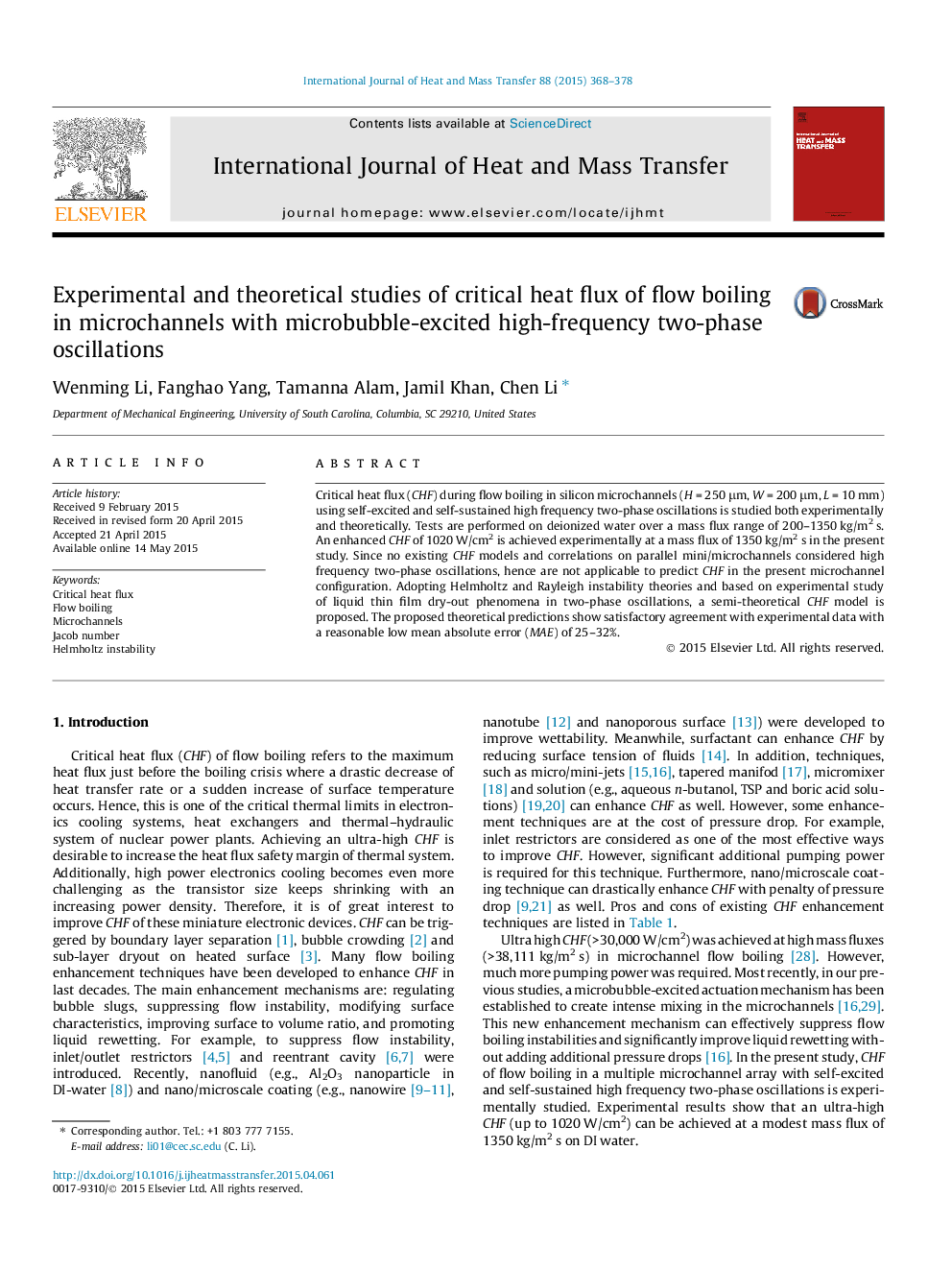| Article ID | Journal | Published Year | Pages | File Type |
|---|---|---|---|---|
| 657031 | International Journal of Heat and Mass Transfer | 2015 | 11 Pages |
Abstract
Critical heat flux (CHF) during flow boiling in silicon microchannels (H = 250 μm, W = 200 μm, L = 10 mm) using self-excited and self-sustained high frequency two-phase oscillations is studied both experimentally and theoretically. Tests are performed on deionized water over a mass flux range of 200-1350 kg/m2 s. An enhanced CHF of 1020 W/cm2 is achieved experimentally at a mass flux of 1350 kg/m2 s in the present study. Since no existing CHF models and correlations on parallel mini/microchannels considered high frequency two-phase oscillations, hence are not applicable to predict CHF in the present microchannel configuration. Adopting Helmholtz and Rayleigh instability theories and based on experimental study of liquid thin film dry-out phenomena in two-phase oscillations, a semi-theoretical CHF model is proposed. The proposed theoretical predictions show satisfactory agreement with experimental data with a reasonable low mean absolute error (MAE) of 25-32%.
Related Topics
Physical Sciences and Engineering
Chemical Engineering
Fluid Flow and Transfer Processes
Authors
Wenming Li, Fanghao Yang, Tamanna Alam, Jamil Khan, Chen Li,
